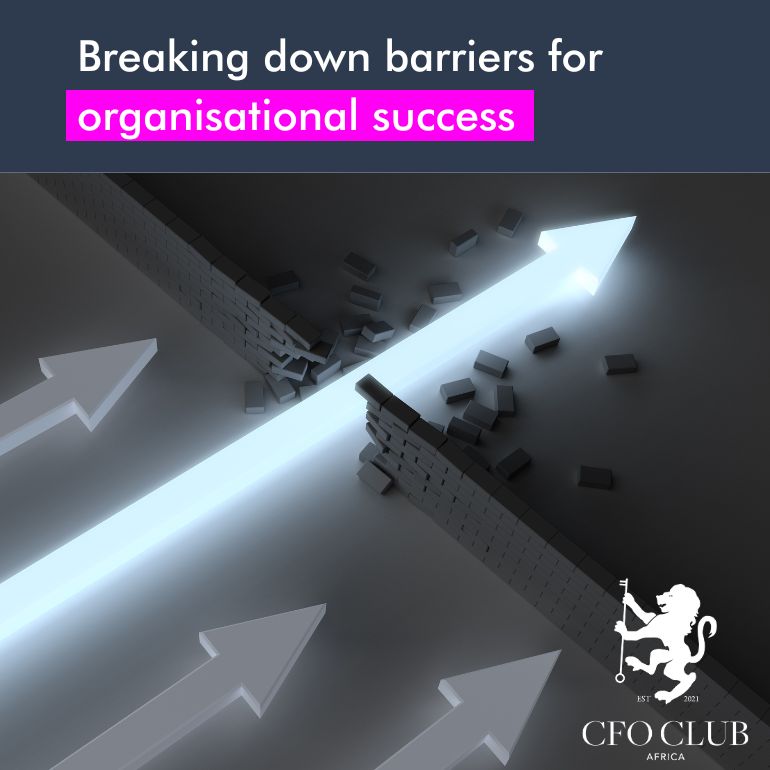Forecast Like a CFO, Not a Fortune Teller
Forecast Like a CFO, Not a Fortune Teller
If your forecast still fits neatly on a spreadsheet tab and assumes the world will behave, it’s time for a rethink. Because let’s face these days, planning the future on a single-track projection is like betting the farm on a weather forecast. As a CFO, you aren’t here to hope the numbers work out. You’re here to make sure they do, no matter what storm hits.
Welcome to the world of risk-adjusted forecasting—the CFO’s answer to uncertainty, complexity, and volatility. Done right, it’s not just a technical upgrade to your planning toolkit. It’s a mindset shift. One that separates reactive finance from strategic leadership.
Why Risk-Adjusted Forecasting Is Non-Negotiable
Let’s be blunt. Traditional forecasting assumes that things go to plan. But business rarely does. Markets shift. Policy changes. Supply chains buckle. Clients pull out. Wars break out. Load shedding. Inflation. FX volatility. The list is endless.
And yet, finance teams often continue producing 12-month projections as if nothing unexpected will happen. That’s not foresight. That’s fiction.
As CFO, your job is not just to produce a plan. It’s to lead a conversation around what could go wrong, what it would cost, and how ready your organisation is to adapt. Risk-adjusted forecasting brings rigour to this process, giving your board the clarity and confidence they need to make bold, informed decisions in the face of risk.
What Is Risk-Adjusted Forecasting—Really?
At its simplest, a risk-adjusted forecast answers two key questions:
1. What are the most likely outcomes across a range of possible scenarios?
2. How do those outcomes change if key risks materialise—or don’t?
It takes your base-case forecast and overlays it with probabilistic thinking. Instead of assuming one version of the truth, you prepare for several—assigning likelihoods, modelling impacts, and mapping interdependencies.
Done properly, this transforms your forecast into a decision-making tool, not just a reporting obligation.
Moving from Static to Strategic
Risk-adjusted forecasting is not just about stress testing your numbers. It’s about rewiring how finance interacts with risk.
Here’s what separates strong CFOs from the spreadsheet jockeys:
- They don’t forecast alone. They pull in risk managers, ops teams, sales leaders, and procurement to build a rounded, interconnected view.
- They prioritise materiality. Not every risk deserves a forecast branch. Focus on what could break the business—macro risk, client concentration, supplier failure, regulatory shocks.
- They quantify the impact. Don’t just say “this is a risk.” Show how it hits EBITDA, cash, margins, or debt covenants.
- They link risks to actions. Great forecasts don’t just highlight downside. They map mitigation plans to them, triggering proactive shifts when thresholds are hit.
This is where your value as CFO really shines—not in crunching scenarios, but in orchestrating the business response before risk turns real.
The Mechanics: How to Build One That Works
Building a robust risk-adjusted forecast doesn’t require a PhD in statistics, but it does need rigour, structure, and the right mindset. Here’s what it takes:
1. Build a Reliable Base Case
Start with a baseline forecast built on defensible assumptions. That means sense-checked revenue projections, realistic cost trends, and clear input from business units. Your base case must be grounded—because all adjustments will build from here.
2. Identify Key Risk Drivers
Not every variable matters equally. A 5% miss on office stationery costs isn’t going to move the needle. But a delayed product launch, credit default from a key customer, or 20% increase in energy costs? Those need your attention.
Focus on risks with:
- High financial exposure
- High likelihood of materialising
- Limited controllability
Think: FX volatility, interest rate changes, labour unrest, regulatory shifts, or dependency on key accounts.
3. Build Scenarios—But Keep Them Real
Develop realistic scenarios: not fantasy, not apocalypse, but plausible variations of the future. Three to five is ideal:
- Base Case – Business as expected
- Downside Case – Key risks materialise
- Severe Case – Compound risk scenario
- Upside Case – Key opportunities deliver above expectations
Each scenario should map through your income statement, balance sheet, and cash flow—not just top-line revenue.
4. Apply Probability Weighting
This is where the “adjusted” part comes in. You need to assign likelihoods to each scenario and build a weighted average view of future outcomes. It’s not about picking winners, it’s about preparing for variance.
This approach also helps when communicating to boards: “Yes, our base case shows R200m EBITDA, but the risk-adjusted forecast suggests R165m once weighted for likely disruptions.”
5. Monitor, Iterate, and Trigger
Forecasting is not a set-and-forget exercise. Set triggers for when assumptions need to be revisited: e.g., if inflation breaches 8%, redo cost-of-sales assumptions. If customer churn accelerates by more than 10%, rework the revenue line.
Technology helps here—tools like rolling forecasts, BI dashboards, or Monte Carlo simulations allow you to respond faster and smarter.
Why This Matters to Your Role as CFO
You’re not just managing finance. You’re shaping how the business interprets risk, capital, and performance. Risk-adjusted forecasting enables you to:
- Make confident capital allocation decisions: With clarity on downside exposure, you can defend investment decisions—or defer them.
- Justify liquidity buffers: Boards don’t like idle cash—until a downturn hits. Forecasting different cash flow paths shows the strategic value of liquidity.
- Negotiate better with lenders: Show that you understand your risk exposure and have a plan. That builds trust and may secure more flexible terms.
- Support dynamic resource planning: From workforce to working capital, forecasts that flex with risk allow the business to plan—not panic.
Ultimately, this shifts your role from historian to strategist—from reporting on performance to actively shaping it.
Common Pitfalls to Avoid
Even experienced CFOs can trip up. Watch out for:
- Overcomplicating the model: Keep it simple and scalable. If no one else can understand it, it’s not helpful.
- Ignoring behavioural risk: Overconfidence in sales projections or underestimating competitor response can derail even the best model.
- Failing to socialise the forecast: Forecasts that sit in Finance are worthless. Embed them into operating rhythms—quarterly reviews, board packs, exec sessions.
- Neglecting upside risks: It’s not all doom. Model what happens if that new product launch goes viral or the rand unexpectedly strengthens.
From Numbers to Navigation
Forecasting is no longer a back-office function. In a world of shifting sands, it’s one of the few tools that can help leadership navigate ambiguity with confidence. But only if it reflects reality, not just hope.
CFOs who embrace risk-adjusted forecasting are better positioned to lead their organisations through uncertainty—not by eliminating risk, but by seeing it clearly, planning for it smartly, and responding with agility.
In the end, the best forecast isn’t the most optimistic. It’s the most honest. And in the hands of the right CFO, it becomes a competitive advantage.





